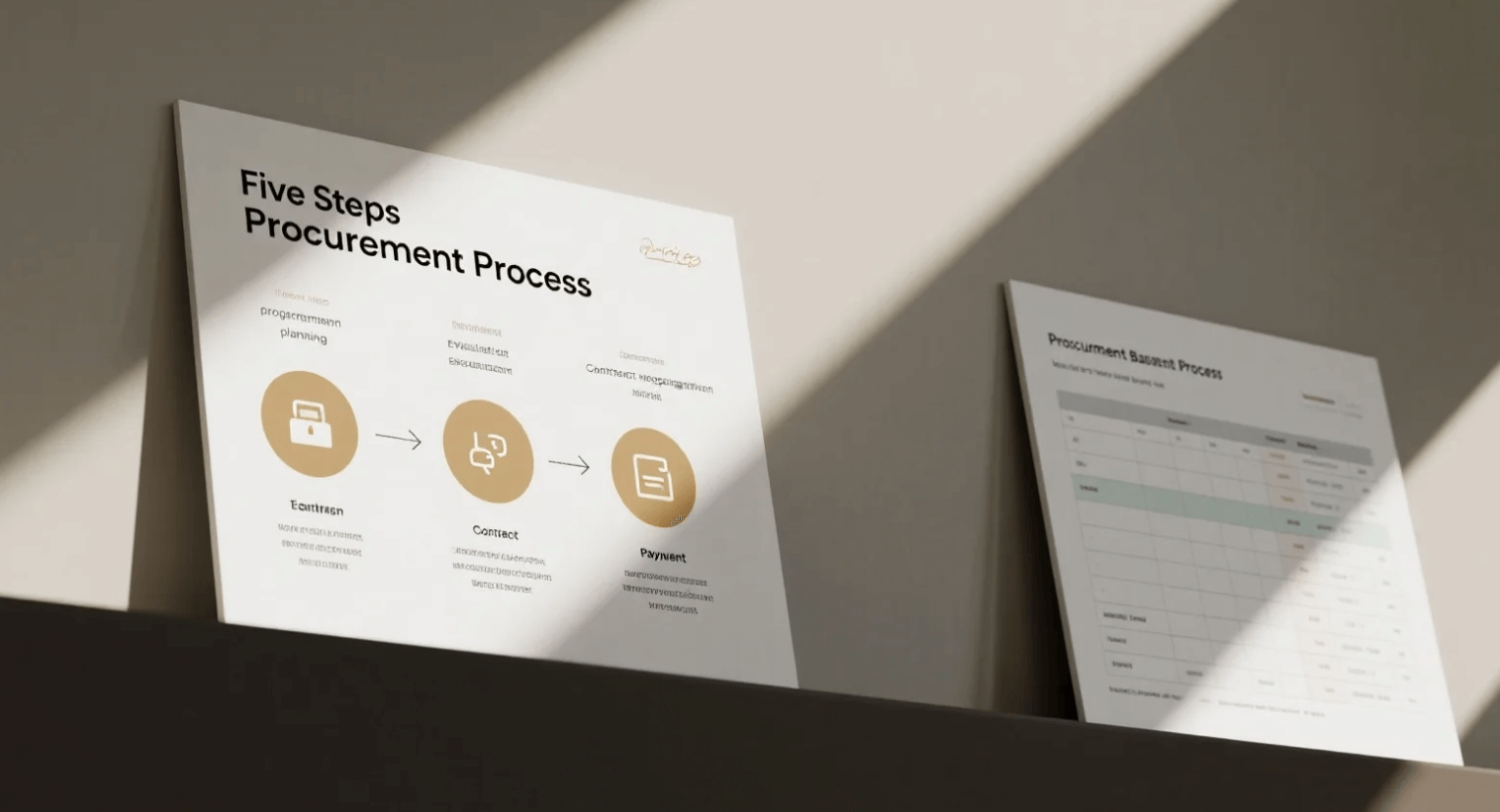In modern supply chains, procurement plays a critical role in ensuring that businesses acquire the right goods and services at the right time, price, and quality. One of the most widely recognized frameworks in procurement is the 5 step procurement process. This structured approach helps organizations streamline purchasing, minimize risks, and maintain strong supplier relationships.
In this article, we will explore each step in detail, examine its importance in procurement operations, and provide practical insights that procurement professionals can apply immediately.
Identifying Needs

The first stage in the 5 step procurement process begins with accurately identifying the needs of the organization. This may involve:
-
Defining the exact product or service specifications
-
Determining the quantity required
-
Assessing the delivery timeline
-
Evaluating budget constraints
For example, a manufacturing company may require specific raw materials that meet certain quality standards. Without clear identification, there’s a risk of ordering the wrong materials, which can delay production or increase costs.
A proactive approach at this stage often includes market research, internal stakeholder consultations, and historical purchase data review to avoid miscommunication and inefficiencies.
Supplier Sourcing and Evaluation
Once needs are identified, the next step is sourcing potential suppliers and evaluating them based on a combination of criteria:
-
Quality assurance: Can they meet required standards?
-
Pricing structure: Is it competitive and transparent?
-
Reliability: Do they have a proven delivery track record?
-
Compliance: Are they compliant with industry regulations?
Many organizations now use supplier databases, industry directories, and trade shows to locate reputable vendors. Evaluation methods often include sending out Requests for Quotation (RFQs), reviewing past performance data, and conducting supplier audits.
This step is vital because choosing the wrong supplier can lead to delays, cost overruns, and reputational damage.
Negotiation and Contracting
After identifying suitable suppliers, businesses move to negotiate terms. This stage in the 5 step procurement process typically involves discussions about:
-
Price and payment terms
-
Delivery schedules
-
Warranty conditions
-
Intellectual property rights (if applicable)
-
Penalties for non-performance
Successful negotiation is not purely about lowering costs — it’s about creating a fair agreement that benefits both parties. Once both sides agree, a formal contract is drafted and signed, outlining obligations, timelines, and quality standards.
Using standardized contract templates and legal review processes helps reduce the risk of disputes later.
Purchase Order and Delivery Management

With the contract in place, a purchase order (PO) is issued. This document confirms the purchase details, including quantities, prices, and delivery dates.
Key tasks in this stage include:
-
Monitoring production progress
-
Ensuring shipment meets agreed timelines
-
Tracking transportation and customs clearance (for international orders)
-
Coordinating with internal teams for warehouse space and inventory updates
Many companies use procurement software to automate PO issuance and tracking, ensuring accuracy and faster processing.
Efficient delivery management minimizes bottlenecks, prevents overstocking or shortages, and keeps operations running smoothly.
Supplier Relationship Management and Review
The final stage of the 5 step procurement process involves assessing supplier performance and maintaining long-term relationships. This includes:
-
Reviewing delivery accuracy and timeliness
-
Evaluating quality consistency
-
Addressing any issues or complaints
-
Exploring opportunities for collaboration and cost savings
Regular performance reviews not only help identify improvement areas but also strengthen partnerships. Long-term, trusted suppliers often provide better pricing, priority access to scarce materials, and early insights into market changes.
Why the 5 Step Procurement Process Matters
Organizations that implement a well-defined procurement process benefit from:
-
Cost efficiency through competitive supplier selection
-
Quality assurance by setting clear standards early
-
Risk mitigation via thorough supplier vetting and contract terms
-
Stronger supplier relationships that drive long-term value
In highly competitive industries, procurement efficiency can be a significant differentiator, influencing both profitability and customer satisfaction.
Best Practices for Implementing the 5 Step Procurement Process
-
Leverage Technology – Use procurement management systems to track POs, supplier performance, and budget spend.
-
Train Procurement Teams – Ensure staff understand negotiation tactics, compliance requirements, and market analysis.
-
Regularly Review Processes – Adapt procurement strategies as market conditions change.
-
Encourage Collaboration – Engage internal stakeholders to align procurement with organizational goals.
Common Challenges and How to Overcome Them
-
Poor Requirement Definition → Conduct internal needs assessment sessions.
-
Supplier Non-Compliance → Include strict clauses and monitoring in contracts.
-
Price Volatility → Use long-term agreements or bulk purchasing to stabilize costs.
-
Inefficient Communication → Implement centralized procurement platforms for transparency.
Conclusion
The 5 step procurement process provides a clear roadmap for businesses aiming to optimize purchasing activities. By following each stage — from identifying needs to managing supplier relationships — procurement teams can achieve greater efficiency, cost savings, and quality control.
In today’s fast-paced market, adopting structured procurement practices is not just beneficial; it’s essential for maintaining competitiveness and sustainability.
FAQ
Q1: Can the 5 step procurement process be applied to both products and services?
Yes. While some details differ, the same framework applies to acquiring both goods and services.
Q2: Is it necessary to follow all five steps for small purchases?
For minor purchases, the process can be simplified, but key principles should still be observed.
Q3: How often should supplier performance be reviewed?
Ideally, every quarter for critical suppliers, and at least annually for others.
Q4: What tools can help manage the procurement process?
Procurement management software such as SAP Ariba, Coupa, or Oracle Procurement Cloud can automate and streamline tasks.













